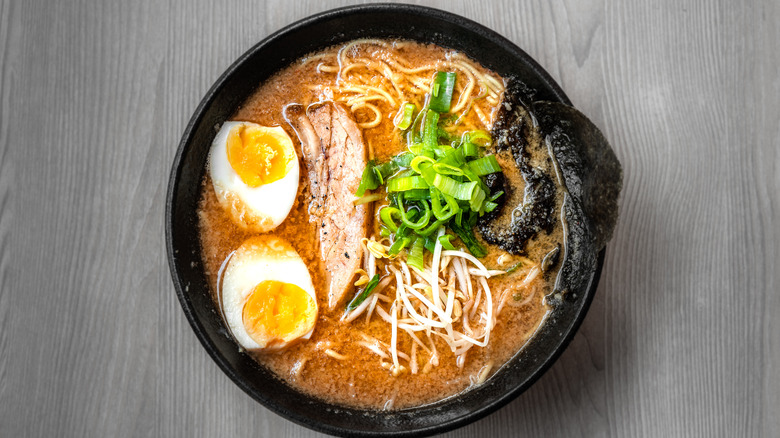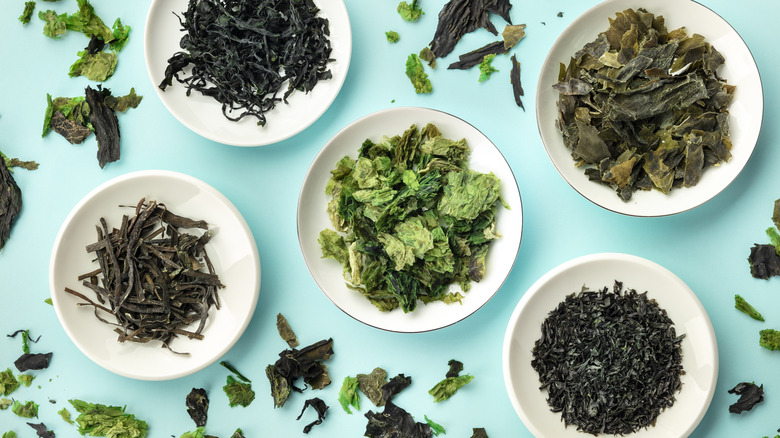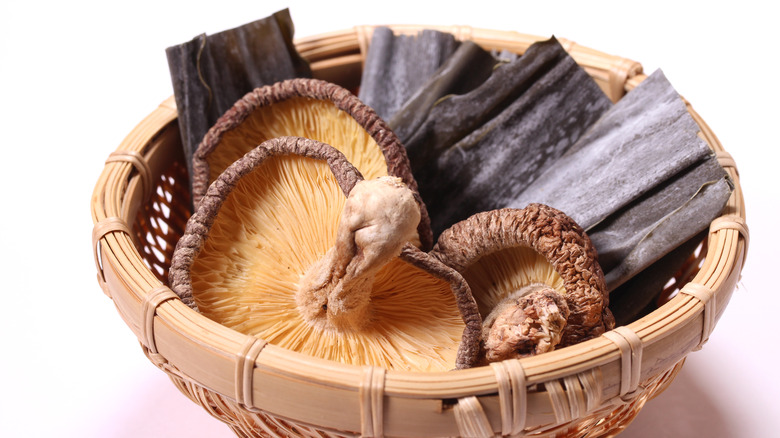The One-Ingredient Addition To Give Ramen A Traditional Flavor Boost
Among the many types of noodles available globally, Japanese ramen is probably the most famous as well as the most ubiquitous. A bowl of rich broth punctuated by chewy wheat noodles and garnished with toppings such as braised pork and marinated egg, Japanese ramen was adapted from Chinese noodles in the 19th century, and its popularity surged after the Second World War when rice was scarce and the Japanese diet was supplemented by wheat flour. Today, ramen ranks among one of the most popular noodles dishes in the world. You will probably find at least one Japanese-style ramen restaurant in every major city, serving up steaming bowls of chewy noodles, flavorful broth, and a variety of toppings. While they are endlessly adaptable, the store-bought instant version can still be a bit bland without some heavy tweaking.
Fortunately, you don't need to be a professional chef to give your ramen at home a traditional twist. All you need is seaweed to boost the flavor of your bowl of ramen at home. No one denies how delicious toppings like chashu (braised pork belly) can be, but they take time and tons of effort. Seaweed is a simple but powerful ingredient to ramp things up in a jiffy!
Seaweed and umami: the foundation of Japanese flavors
It might come as a surprise to you, but seaweed is one of the reasons why Japanese food is so healthy and yet so flavorful. Seaweed is one of the primary sources for umami, a taste that has no direct Western translation — although it roughly correlates to "meatiness" and "savory," and as an island nation that relies on seafood for sustenance, seaweed has long been a key part of the Japanese diet. This is why although traditional Japanese food does not contain a lot of fat, nor does it rely on many seasonings, a bowl of miso soup — or even ramen — is still packed with so much flavor.
It turns out that glutamate, the key chemical that provides what is now known as umami, is abundant in kombu kelp, which forms the basis of a common Japanese stock known as dashi, clear Japanese broths rich in flavor and frequently the base of ramen. By using ingredients rich in umami, you can enhance flavor without heavy use of salt or fat, allowing for healthier cooking that does not sacrifice taste. Other foods that are rich in umami and can be used in ramen include soy (beans or sauce), mushrooms, and kimchi.
Using seaweed to enhance your noodles
There are a variety of ways to use seaweed to add a little oomph to your ramen. If you are using instant noodles, you can enhance their flavor by adding shredded salted seaweed just before serving. They are available from Asian grocery stores and popular markets such as Whole Foods. This prepared seaweed is seasoned and ready to eat, so all you need to do is use a pair of scissors and cut them into strips. Alternatively, you can use them as-is on top of the noodles, and let them disintegrate on their own in the broth.
However, if you wish to make your own broth, dashi is also easy to make. To do so, you need dried kombu, a common Japanese seaweed that you can find in the same outlets mentioned above. Soak the kombu in a pot of water and gently heat it to a light simmer without boiling. Remove the seaweed and add dried shiitake mushroom to simmer for 30 minutes, then remove the rehydrated mushrooms for later use. What you are left with is a dashi that is not only light and flavorful but also suitable for vegan use. Flavor the broth with soy sauce or salt and you have a clear, healthful base for ramen noodles.



